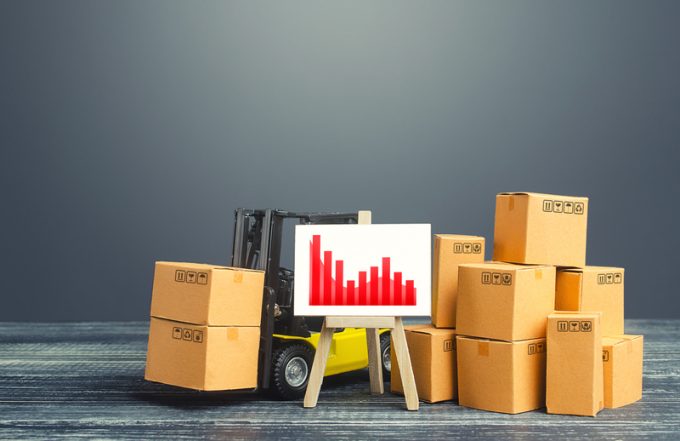CMA CGM outlines plan to deploy AI across shipping and logistics operations
CMA CGM plans to apply artificial intelligence (AI) in its business, including starting an AI ...
TFII: SOLID AS USUALMAERSK: WEAKENINGF: FALLING OFF A CLIFFAAPL: 'BOTTLENECK IN MAINLAND CHINA'AAPL: CHINA TRENDSDHL: GROWTH CAPEXR: ANOTHER SOLID DELIVERYMFT: HERE COMES THE FALLDSV: LOOK AT SCHENKER PERFORMANCEUPS: A WAVE OF DOWNGRADES DSV: BARGAIN BINKNX: EARNINGS OUTODFL: RISING AND FALLING AND THEN RISING
TFII: SOLID AS USUALMAERSK: WEAKENINGF: FALLING OFF A CLIFFAAPL: 'BOTTLENECK IN MAINLAND CHINA'AAPL: CHINA TRENDSDHL: GROWTH CAPEXR: ANOTHER SOLID DELIVERYMFT: HERE COMES THE FALLDSV: LOOK AT SCHENKER PERFORMANCEUPS: A WAVE OF DOWNGRADES DSV: BARGAIN BINKNX: EARNINGS OUTODFL: RISING AND FALLING AND THEN RISING

Global logistics trends have stabilised over the past four years – but Covid-19 has accelerated some transformation, while other trends have taken more of a back seat.
The review of changes comes in DHL’s Logistics Trend Radar, a thorough analysis of what is happening now –and what is coming.
“The mega-trends that will continue to engage us are not unfamiliar: new technologies, growing e-commerce and sustainability,” said Katja Busch, DHL’s chief commercial officer.
“But some areas will evolve faster than others, so there is the need to understand the underlying trends and their impact on logistics – not least because of the impact of Covid-19.”
One of the interesting findings is the amount of investment pouring into the sector: since 2012, venture capitalists have invested nearly $30bn, with some 3,000 start-ups currently developing new products and services. Four areas attracted the most investment: big data and advanced analytics; artificial intelligence; robotics and automation; and the internet of things.
But there are likely to be others on the way, noted DHL.
“A host of other technologies has arrived on the market showing great potential, but these have yet to reach widespread use in logistics. Blockchain … has potentially game-changing benefits for leaner, faster, and more transparent and secure supply chains. However, significant cultural and technical hurdles need to be overcome for its broad deployment in logistics.”
It also cited unmanned aerial vehicles (UAVs), drone deliveries and self-driving vehicles as areas with legislative and technical challenges, which have not developed as fast as expected.
On the tech side, DHL pointed to the growth in logistics marketplaces, where demand and supply is aggregated.
It pointed out: “Logistics marketplaces are stabilising on a few leading platforms, and established forwarders are entering the game with their own digital offerings, backed with robust global logistics networks.”
It noted opportunities including increased price transparency, real-time quotes, flexible sourcing and optimised capacity utilisation and load balancing. However, offsetting these advantages is the difficulty digital-only players have with service quality, data security and integration of advanced technologies into existing structures.
Globalisation, meanwhile, is “entering a new phase as emerging economies consume more of what they produce and countries in mature markets seek to improve the security of critical supply chains and the sustainability of their economies”.
Inevitably, e-commerce gets a look-in as one of the 29 trends explored.
“E-commerce is still growing rapidly and yet represents only a fraction of global consumer retail spending. Business-to-business e-commerce is expected to follow suit and dwarfs the consumer market size by a factor of three,” said DHL, adding that growth has been accelerated by the pandemic.
Sustainability has gone up the agenda, and is now “imperative”. DHL focuses on packaging, optimising processes, and smart facilities, which “provide huge potential for logistics to become more environmentally friendly”.
But key to all of this is the people in logistics.
“Organisations that fail to recognise the central role of people in the success of their supply chains are already running into problems, from shortages of skilled personnel to the outright rejection of promising new technologies.”
Matthias Heutger, senior vice president, global head of innovation & commercial development explained:“The next big challenge will be future-proofing the logistics workforce through training and upskilling in increasingly technologically sophisticated operations. This will take centre stage on the strategic agendas of supply chain organisations in the years to come.”
To download the full report, click here.
Comment on this article